What Is Silicone Rubber?
As a synthetic elastomer, silicone rubber is derived from a combination of silicon, carbon, oxygen, and hydrogen. Silicone rubber is widely used in products like silicone cookware, baby bibs, and medical devices. All thanks to its flexibility, heat resistance, and durability.
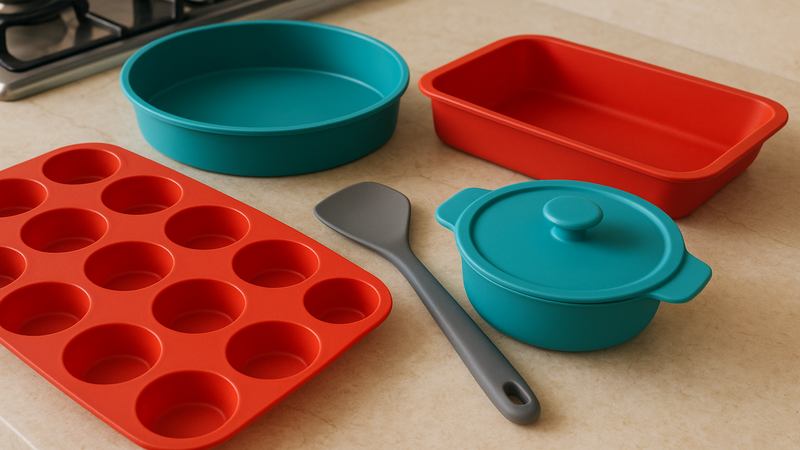
Silicone rubbers are categorized into three main types:
- Solid Silicone Rubber: It is also known as High Consistency Rubber (HCR). It is best for compression-molded parts like seals and gaskets.
- Room-Temperature Vulcanized (RTV) Silicone: It is used for coatings, adhesives, and sealants. It cures at room temperature.
- Liquid Silicone Rubber (LSR): It is in liquid form for accurate molding. LSR is commonly used in baby products and kitchenware.
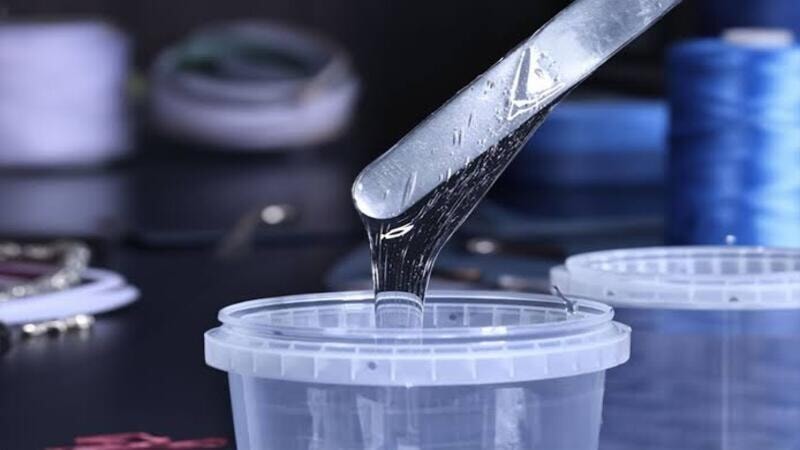
Silicone rubber is widely versatile, all thanks to its availability in various forms, including sheets, seals, tubing, and molded parts. Despite its wide use, the question silicone is non-toxic or toxic remains unanswered.
Note that the answer depends on its grade and how it’s used, which will be explored further in this article.
Common Applications of Silicone Rubber
Silicone rubber is widely used across industries, including kitchenware, the medical industry, and in baby products. The typical applications of silicone rubber are discussed below:
Cookware and Bakeware
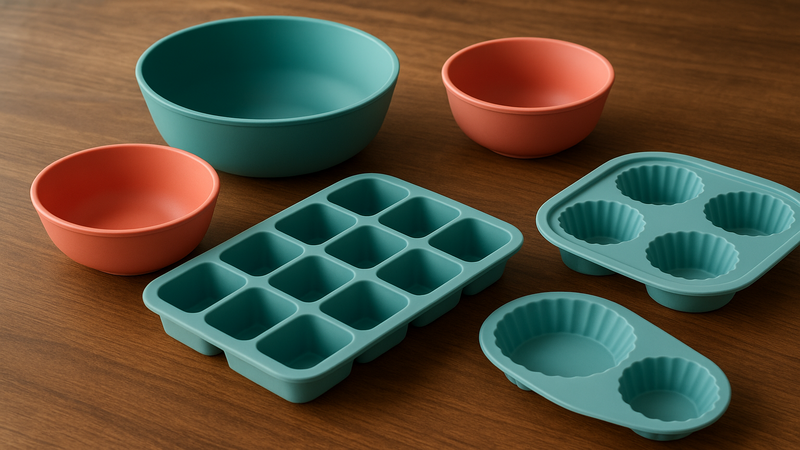
Baking mats, spatulas, and food storage containers are made using food-grade silicone rubber. Food-grade silicone is non-toxic and heat-resistant. Thus, it is safe even when it comes in direct contact with food.
So, to answer the question, is silicone safe when it comes in contact with food? We can say that food-grade silicone is secure. However, the poor-quality and low-grade silicone is not.
Medical Devices
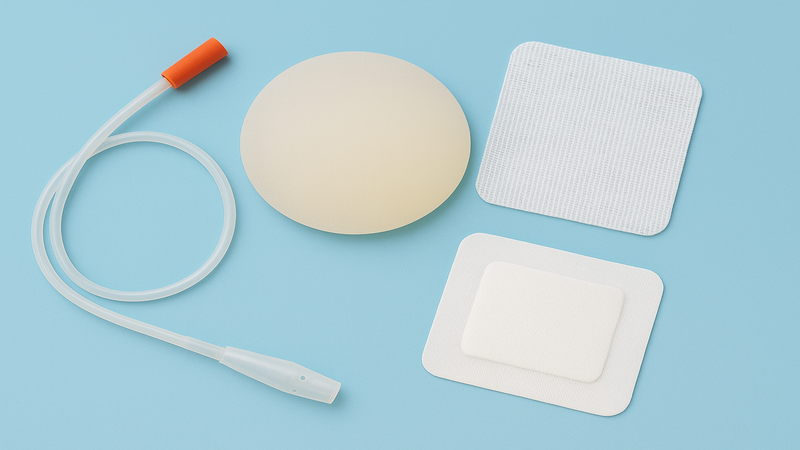
The use of silicone in medical devices like catheters, implants, and wound dressings helps answer the question is silicone non toxic to a great extent.
The biocompatible and non-reactive nature of silicone makes it perfect for use in medical devices. Additionally, the medical-grade formulation makes silicone non-toxic and highly safe.
Electronics
By offering insulation, heat, and electrical conductivity, silicone rubber is used in electronic devices.
Automotive and Industrial
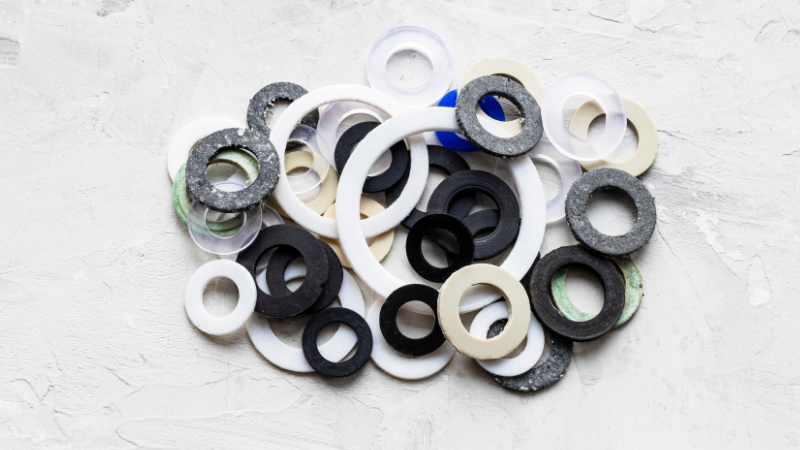
With its ability to withstand high temperatures and stress, silicone rubber is used in engine gaskets, seals, and industrial molds. To answer the question of whether thermoplastic rubber is toxic, it is important to note that silicone is generally considered a safer alternative.
Thermoplastic rubber releases chemicals under heat. On the other hand, silicone is secure, stable, and does not release harmful substances.
Summary
| Application | Examples of Products | Safety Note |
| Cookware & Bakeware | Oven mats, molds, spatulas, and baking trays | Must be FDA-approved food-grade silicone and heat-resistant. |
| Medical Devices | Catheters, implants, tubing, dressings | Use medical-grade silicone, biocompatible and safe for sterilization. |
| Electronics | Insulators, gaskets, cables, keypads | Must offer high-temperature stability and excellent electrical insulation. |
| Automotive & Industrial | Engine seals, hoses, gaskets, keypads | Must be Industrial-grade silicone |
Is Silicone Rubber Toxic?
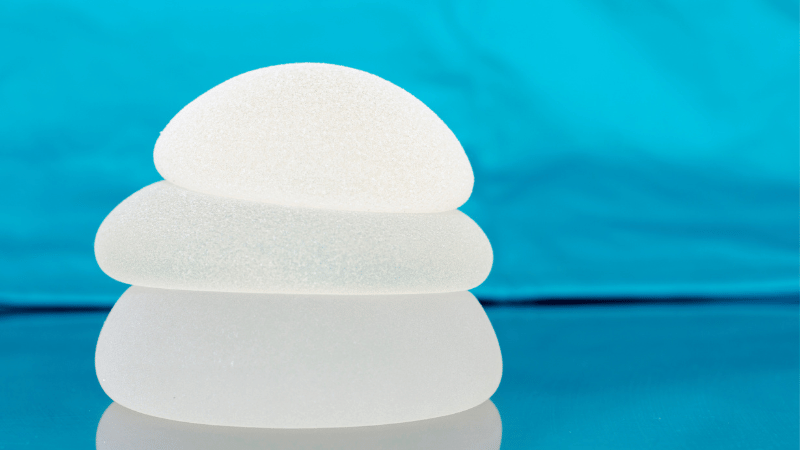
Silicone rubber in its pure form is non-toxic and not chemically reactive. Under normal conditions, pure silicone rubber does not react with water, food, or skin, making it safe and non-toxic.
However, toxicity concerns arise when it is mixed with additives, fillers, and curing agents. Low-quality silicone derived from additives, curing agents, and fillers that release toxins can pose safety risks.
So, we can say that silicone is safe in its pure form, but its safety depends on its grade and manufacturing quality.
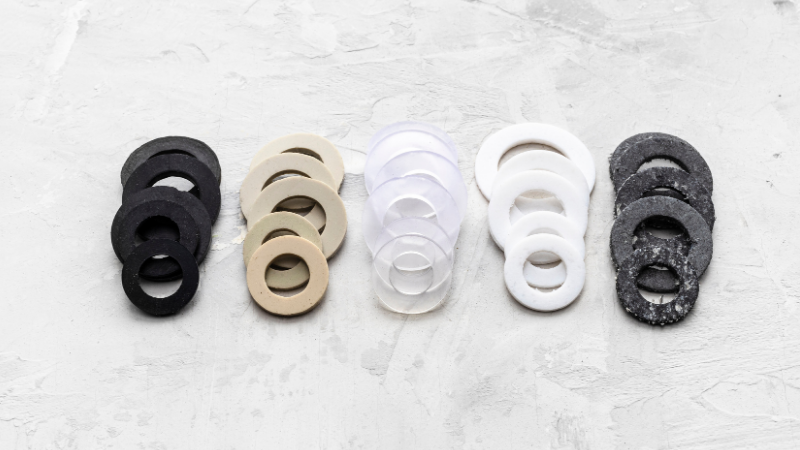
High-grade silicone made with high-quality additives and curing agents is non-toxic. In contrast, poor-quality silicone with cheap additives poses risks to its safety.
When and How Can Silicone Rubber Become Toxic?
Silicone rubber is non-toxic; however, it can become toxic under certain conditions. These conditions are mentioned below:
Low-Quality or Industrial-Grade Silicone
Low-quality silicone contains harmful additives, fillers, and low-quality curing agents. These additives can release chemicals, especially when exposed to heat.
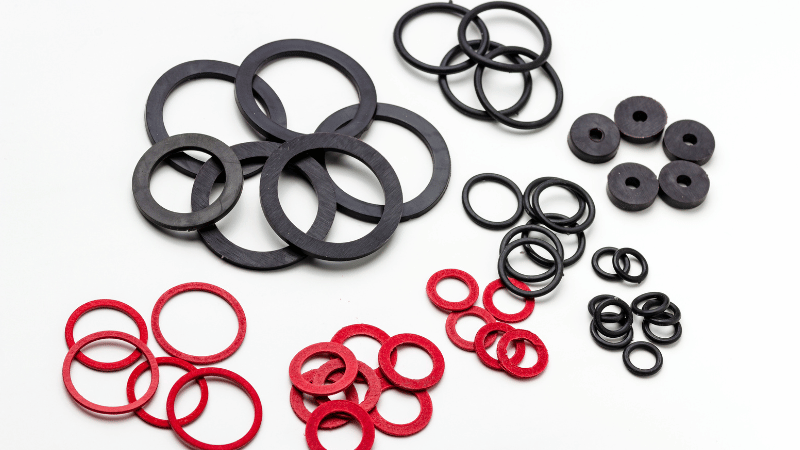
To prevent the associated risks, always choose certified food-grade and medical-grade silicone, which is in line with the FDA and LFGB safety standards. The silicone with these grades is tested to ensure that the material is non-toxic, stable, and safe for use.
Extreme Heat (>250°C / 480°F)
When exposed to temperatures exceeding 250 degrees Celsius, silicone can begin to degrade and release harmful compounds. This degradation affects its durability and can cause unpleasant odors and chemical breakdowns.
To prevent silicone from degrading, always use silicone products within the rated temperature range and avoid direct exposure to open flames and heating elements.
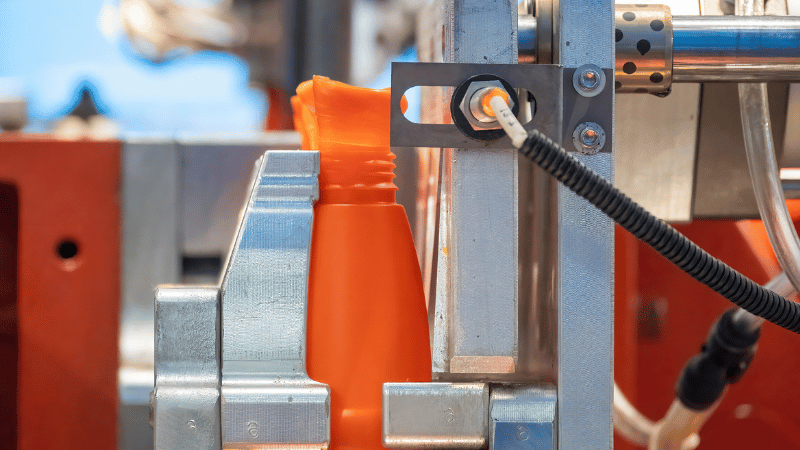
Note that high-quality platinum-cured silicone withstands heat and stays stable compared to the peroxide-cured types.
Chemical Exposure
Silicone rubber reacting with harsh chemicals such as strong oils, solvents, or acids can lead to discoloration, reduced flexibility, and chemical weakening.
To avoid these issues, it is advised to always clean silicone products with mild detergents or compatible cleaning agents. Avoid cleaners that can break down the silicone surface over time.
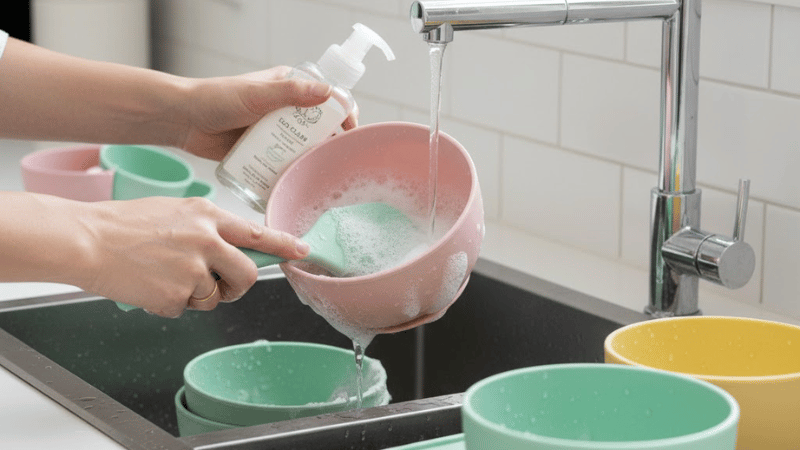
Improper Curing
Curing is the process of transforming raw silicone into a flexible, solid, durable, and rubber-like finished product. If not appropriately cured, the curing agents can release chemicals when exposed to heat and moisture.
This is more common in peroxide-cured silicone. To avoid this, always opt for platinum-cured silicone, which is non-toxic and odor-free, hence safe for cookware, baby products, and medical applications.
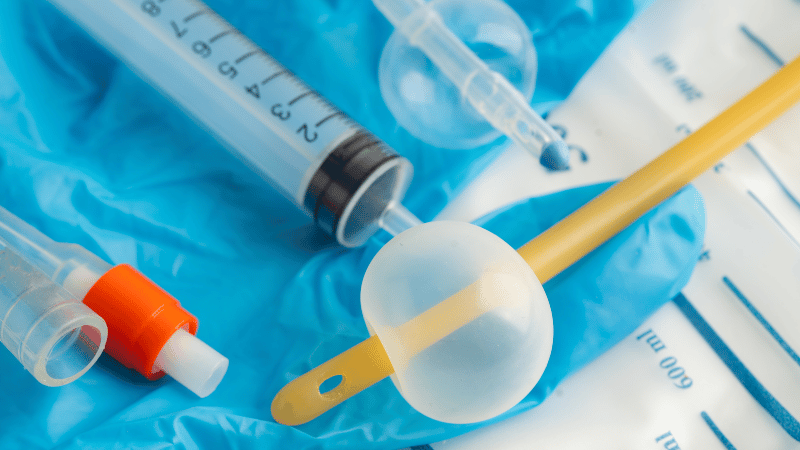
The table below provides a side-by-side comparison of conditions, potential risks, and prevention measures to help you determine whether silicone is safe under all conditions.
| Condition | Potential Risk | Prevention |
| Low-quality or industrial-grade silicone | May contain harmful additives, fillers, and low-quality curing agents | Use certified food-grade and medical-grade silicone |
| Extreme heat (>250°C / 480°F) | Can degrade and release harmful compounds when exposed to temperatures of more than 250°C | Use products within the rated temperature range; Avoid direct exposure to flames |
| Chemical exposure | May discolor when it reacts with oils, solvents, or acids | Use compatible cleaning agents |
| Improper curing | Uncured residues can leach chemicals | Choose platinum-cured silicone |
Health Risks of Silicone Exposure
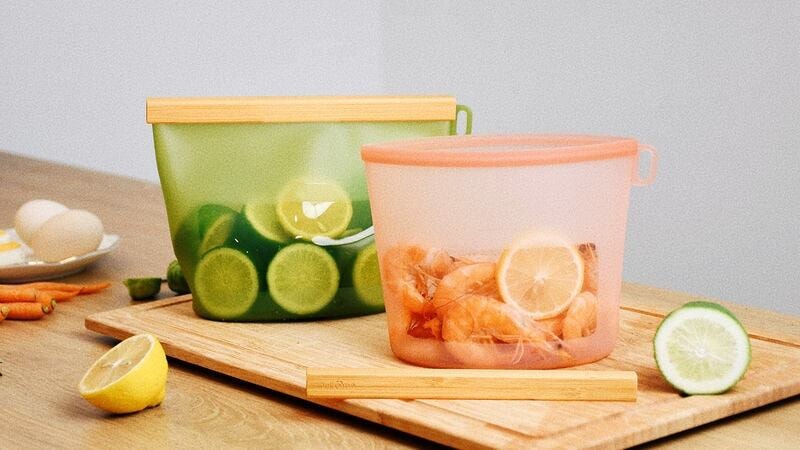
Silicone polymer is generally safe, especially when it comes in direct contact with food, water, and skin. However, certain conditions can contribute to potential health risks. The conditions that can pose risks and the risks associated are mentioned below.
1. Skin Irritation (Industrial Grades)
Industrial-grade silicone is not suitable for direct contact with skin as it may contain uncured chemicals, fillers, or additives. These compounds can cause skin irritation, redness, or itching.
To prevent skin irritation caused by industrial-grade silicone, avoid using it for products that come in direct contact with skin, i.e., baby items and kitchenware. Always choose food or medical-grade silicone, which is tested to be non-toxic.

2. Chemical Leaching (If Overheated)
When poor-quality silicone is exposed to temperatures above 250°C, it begins to degrade and release harmful compounds. This may affect the air quality and compromise food safety.
To avoid chemical leaching, use silicone products only within the suitable temperature range and avoid direct contact with open flames. Lastly, prefer platinum-cured silicone.
3. Respiratory Irritation
When raw or uncured silicone is heated, it can release fumes and vapors that can cause respiratory issues. To avoid this, ensure proper ventilation in industrial settings and wear masks when handling or curing silicone.

Note: Silicone does not contain BPA, phthalates, or latex, which are common in plastics, making it even safer and more suitable for everyday and medical use.
How to Use Silicone Products Safely?
To use silicone products safely, make sure to:
1. Check Certification
Always ensure that the silicone products are certified as food-grade and medical-grade. These certifications guarantee that the silicone is tested for safety, non-toxicity, and stability.
2. Follow Temperature Limits
To use silicone products safely, avoid using them above the recommended temperature range. Don’t expose them directly to open flames and heating elements. Also, avoid prolonged exposure above 250 degrees Celsius.
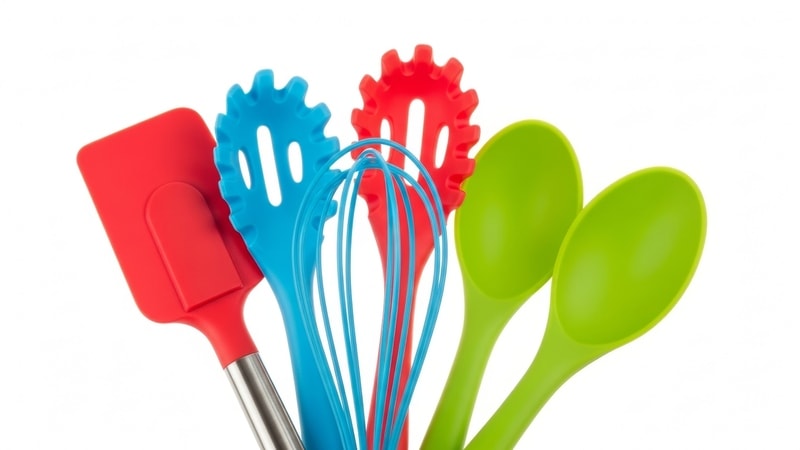
3. Do Not Cut the Cookware
Cutting the silicone kitchenware can weaken the surface and expose the fillers. To maintain the safety and longevity of the product, do not cut or scratch the cookware.
4. Clean With Mild Soap
Avoid using harsh cleaning agents, as the strong chemicals can break down the silicone surface over time.
5. Replace if Discoloration or Odor Develops
Silicone products discoloring or developing a persistent odor indicate chemical breakdown. Upon noticing such issues, immediately replace the product to ensure safety and hygiene.
Is Silicone Environmentally Safe?
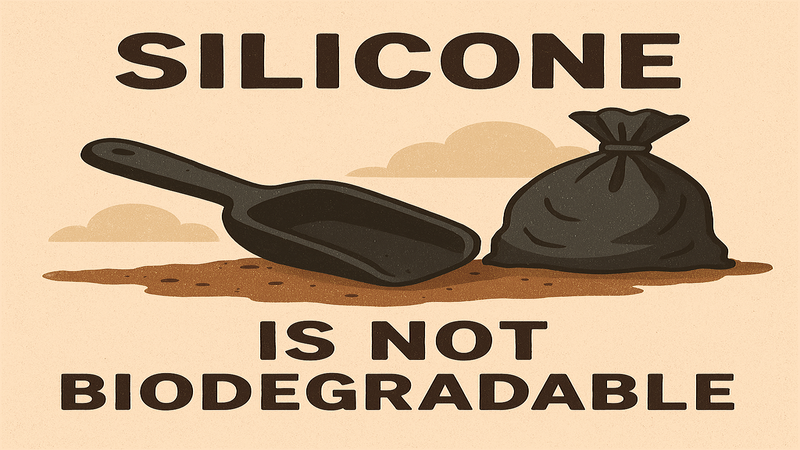
Silicone is considered environmentally safe, but it is not completely eco-friendly. The following reasons explain the above-mentioned statement:
- Silicone is not biodegradable, i.e., it does not decompose naturally. However, it is durable and long-lasting, which reduces the need for frequent replacements.
- It takes longer to degrade than plastic, but it can be mechanically recycled.
- When disposed of properly, silicone does not release harmful chemicals. Thus, it is safe for the environment.
Silicone vs. Thermoplastic Rubber (TPR): Which Is Safer?
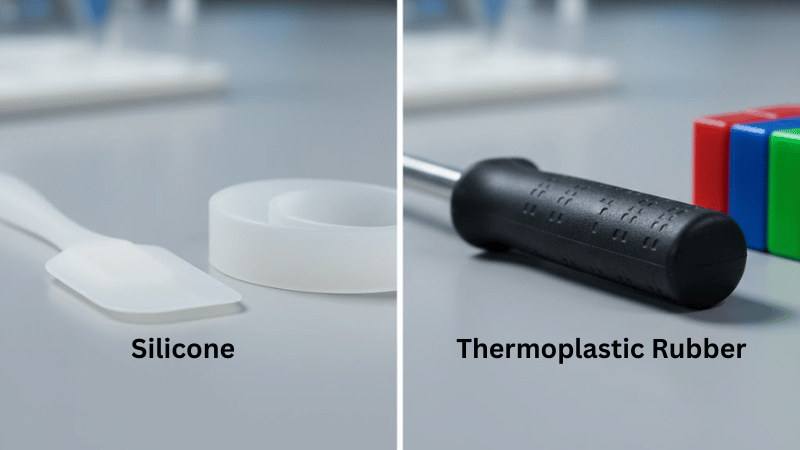
The table below compares silicone with thermoplastic rubber based on different properties. Read now to find the answer to “is silicone safe” or “is thermoplastic rubber toxic” easily.
| Property | Silicone Rubber | Thermoplastic Rubber (TPR) |
| Toxicity | Non-toxic, BPA and phthalate-free, safe for food and medical use | May leach out harmful chemicals when heated; not always food-safe |
| Heat Resistance | Up to 250°C (480°F) | Up to 120°C (248°F) |
| Flexibility | Excellent flexibility and elasticity even at extreme temperatures | Flexible but may harden or crack under heat or cold |
| Longevity | Highly durable, resists aging, UV, and chemical exposure | Shorter lifespan; degrades faster under stress or heat |
Conclusion
Unlike thermoplastic rubber, which releases chemicals when heated, silicone can withstand high temperatures. Also, silicone material is free of latex and BPA, making it perfect for use in kitchenware.
Owing to these qualities, production managers use food-grade and medical-grade silicone widely. Also, silicone is safe for the environment, making it perfect for eco-conscious users.
To ensure that your silicone rubber parts are safe, always choose a reliable supplier such as Hongju Silicone.
Hongju Silicone: Your Trusted Partner For Silicone Rubber Parts
At Hongju, we are dedicated to offering eco-friendly silicone products that adhere to safety standards. We deliver 3–5 day prototyping, flexible MOQs, and 20+ years of manufacturing mastery. Save time, reduce costs, and achieve top-quality silicone products faster.
Want to know how our silicone innovations can benefit your business? Contact us to request a bulk quote now.
FAQs
Q1. Are there harmful chemicals in silicone?
Pure silicone is free from all harmful chemicals like BPA, latex, and phthalates. However, low-quality silicone has additives and curing agents that leach out toxic chemicals.
Q2. Is silicone more harmful than plastic?
Plastic contains BPA, latex, or phthalates. Silicone is free from all such harmful substances, making it safer than plastic.
Q3. Does silicone release toxins when heated?
High-quality, food and medical-grade silicone does not release toxins when heated. However, low-quality silicone may cause degradation or emit harmful toxins when overheated.
Q4. Is 100% silicone food safe?
Yes, 100% food-grade silicone is safe for cooking and baking. It does not leach harmful chemicals, making it perfect for kitchenware.